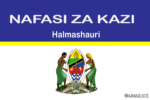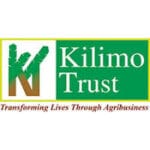AboutENGLISH HOME LANGUAGE
Language is a tool for thought and communication. It is also a cultural and aesthetic means commonly shared among a people to make better sense of the world they live in. Learning to use language effectively enables learners to acquire knowledge, to express their identity, feelings and ideas, to interact with others, and to manage their world. It also provides learners with a rich, powerful and deeply rooted set of images and ideas that can be used to make their world other than it is; better and clearer than it is. It is through language that cultural diversity and social relations are expressed and constructed, and it is through language that such constructions can be altered, broadened and refined.
Language levels
Language learning in the Intermediate Phase includes all the official languages in South Africa, namely, Afrikaans, English, isiNdebele, isiXhosa, isiZulu, Sepedi (Sesotho sa Leboa), Sesotho, Setswana, Siswati, Tshivenda, Xitsonga
– as well as Non-official Languages. These languages can be offered at different language levels.
Home Language is the language first acquired by learners. However, many South African schools do not offer the home languages of some or all of the enrolled learners but rather have one or two languages offered at Home Language level. As a result, the labels Home Language and First Additional Language refer to the proficiency levels at which the language is offered and not the native (Home) or acquired (as in the additional languages) language. For the purposes of this policy, any reference to Home Language should be understood to refer to the level and not the language itself.
The Home Language level provides for language proficiency that reflects the basic interpersonal communication skills required in social situations and the cognitive academic skills essential for learning across the curriculum. Emphasis is placed on the teaching of the listening, speaking, reading and writing skills at this language level. This level also provides learners with a literary, aesthetic and imaginative ability that will provide them with the ability to recreate, imagine, and empower their understandings of the world they live in. However, the emphasis and the weighting for Listening and Speaking from Grade 7 onwards are lower than those of the reading and writing skills.
The First Additional Language refers to a language which is not a mother tongue but which is used for certain communicative functions in a society, that is, medium of learning and teaching in education. The curriculum provides strong support for those learners who will use their first additional language as a language of learning and teaching. By the end of Grade 9, these learners should be able to use their home language and first additional language effectively and with confidence for a variety of purposes, including learning.
In South Africa, many children start using their additional language, English, as the Language of Learning and Teaching (LoLT) in Grade 4. This means that they must reach a high level of competence in English by the end of Grade 3, and they need to be able to read and write well in English.
The First Additional Language level assumes that learners do not necessarily have any knowledge of the language when they arrive at school. The focus in the first few years of school is on developing learners’ ability to understand and speak the language – basic interpersonal communication skills. In Grades 2 and 3 learners start to build literacy on this oral foundation. They also apply the literacy skills they have already learned in their Home Language.











